Written by Martha Henze, MPH, MS, RDN (Registered Dietitian Nutritionist)
When to eat and when to take Parkinson’s medications can be confusing, as can information about protein and Parkinson’s medications. You may have heard, “Eat food with your medication to prevent stomach upset and nausea.” You may have heard, “Eat food 30 minutes before or one hour after taking your medication to improve absorption of your Parkinson’s medication and prevent a nutrient-drug interaction.” You may have also heard, “Don’t eat those foods at all.”
Okay, so which one is it. And what should you do?
There’s no one best diet for people with Parkinson’s. That would make it easy, but it doesn’t exist. For optimal health, you will ideally eat a variety of foods and create a healthy, colorful plate. Foods consist of three macronutrients: carbohydrates, fats, and proteins. All three are vital to help you stay healthy, stay energized, and better control your Parkinson’s symptoms. In general, the macronutrients of carbohydrates and fats provide energy while protein builds muscles.
The Protein Effect
For most people in the early stages of Parkinson’s, it doesn’t matter when foods with protein are eaten, and when the medication carbidopa-levodopa is taken. For others, as Parkinson’s progresses, if medication is taken with a high protein meal, they experience more OFF periods with motor fluctuations, such as gait freezing. Medications stop working sooner, their bodies become more sensitive to nutrition choices, and they experience a narrower window when carbidopa-levodopa provides relief. Since protein appears to be the culprit, many people begin eating less protein. However, as movement disorder specialist Dr. Cherian Karunapuzha says, “limiting protein in people with Parkinson’s is a bad idea.”
Why is protein important for people with Parkinson’s?
People with Parkinson’s and seniors are at an increased risk for protein malnutrition. Not eating enough foods that contain protein is associated with slower wound healing, increased potential for falls, and greater risk of getting sick. Because seniors absorb protein differently, it is best to spread out protein intake consistently throughout the day.
Protein is essential for the following:
- Improve wound healing
- Decrease potential for falls
- Help with muscle repair after exercising
- Provide building blocks for healthy bones and skin
- Prevent muscle wasting
- Develop red blood cells that transport oxygen in your body
- Maintain weight and prevent weight loss
- Enhance immunity and decrease risk of getting sick
- By eating enough protein and calories, if you do become sick, your body’s immune response is stronger, and you will heal faster.
What is the effect of dietary protein on carbidopa-levodopa?
The main medication for people with Parkinson’s is carbidopa-levodopa. In the body, protein is broken down into building blocks called amino acids. In order to absorb and use these amino acids, your body needs a carrier to transport them to the blood and the brain. Imagine that this carrier is like a bus. Because carbidopa-levodopa and amino acids have a similar shape, they use the same “bus” to transport them to the blood and brain. Since the “bus” has limited seats, when you eat protein and take carbidopa-levodopa in the same meal, the seats in the “bus” are full and less carbidopa-levodopa is absorbed. When less carbidopa-levodopa reaches the brain, your motor and non-motor symptoms can worsen.
What should I do if I experience nausea when taking my medication?
To prevent nausea or an upset stomach, take your medication with foods that don’t contain protein such as…
- Carbonated clear sodas, such as ginger ale
- Saltine crackers, dry toast, or pretzels
- Herbal teas, such as ginger, and peppermint
How much protein do I need?
For optimal health, you need about a half gram of protein per pound of body weight every day. Take your weight in pounds and divide it by two to determine the grams of protein you need. For example, if you weigh 140 pounds, you should eat about 70 grams of protein. Since seniors are less efficient at processing protein, spreading protein consumption evenly throughout the day can improve absorption. If you eat three meals a day, divide the 70 grams by three. You should eat about 23 grams of protein in each meal. Of course, if you weigh more, eat more protein. If you weigh less, eat less protein.
You may think 20-25 grams of protein is a lot in one meal; however, if you plan ahead, incorporating the amount of protein you need is easy.
Breakfast
Breakfast is the time that most people don’t eat enough protein. Just eating oatmeal or cereal with milk isn’t enough. Add Greek yogurt, a slice of cheese, peanut butter on your whole-grain toast, an egg, or turkey sausage to increase protein.
Lunch
For lunch, two cups of chili with beans provide 20 grams of protein. Add some cornbread with some honey, and a half cup of milk or a dairy alternative, such as soy milk (4 oz.) and you have met your protein requirement for lunch. A grilled cheese sandwich with tomato soup and carrots sticks is another balanced meal idea.
Dinner
Broil three ounces of salmon for dinner with sweet potatoes and asparagus, and you have created a balanced, delicious meal that meets your protein needs. For dessert, cut up a peach and serve with vanilla sherbet.
What foods are good sources of protein?
Good sources of protein include both animal and plant sources. Plant sources include beans, lentils, peas, nuts, seeds, and protein alternatives. Animal sources include meat, fish, poultry, eggs, milk, and cheese.
| Amount of protein in common foods | ||
| Food | Amount | Grams of protein (approximate) |
| Milk | 8 oz = 1 cup | 8 grams |
| Greek Yogurt | 8 oz. = 1 cup | 18 grams |
| Regular Yogurt | 8 oz. = 1 cup | 9 grams |
| Egg | 1 large | 6 grams |
| Meat, fish, poultry, cooked | 1 oz. | 7 grams |
| Meat, fish, poultry, cooked | 3 oz. = size of a deck of cards | 21 grams |
| Cheese | 1 oz. = size of string cheese | 7 grams |
| Peas, cooked | ½ cup | 4 grams |
| Beans, lentils, cooked | ½ cup | 10 grams |
| Quinoa, cooked | ½ cup | 4 grams |
| Peanut butter | 1 Tablespoon | 4 grams |
| Nuts and seeds | 1 oz. | 6 grams |
| Vegetables | ½ cup | 2 grams |
| Bread | 1 slice | 3 grams |
| Fruit | ½ cup | 0 grams |
Click here to find the amount of protein in different foods. Measure or weigh your portion size to obtain accurate results.
Tips to eat enough protein around your dosing
You may or may not notice that eating foods with protein and taking your medication together make a difference in your Parkinson’s signs and symptoms. If you do, talk to your doctor, and ask if this rule of thumb and dosing scenario below could work for you. Of course, remember to change the times based on when you wake up in the morning but keep the intervals the same.
Rule of thumb to improve absorption:
- Take carbidopa-levodopa one hour before a meal
OR
- Take carbidopa-levodopa two hours after a meal
| Dosing Scenario: 3 doses of carbidopa-levodopa in one day | ||
| Time | Dose | Activity |
| 6:00 am | 1st dose | Drink with a large glass of water |
| 7:00 am | No medication | Eat breakfast with 20-25 grams of protein |
| 12:00 (noon) | No medication | Eat lunch with 20-25 grams of protein |
| 2:30 pm | 2nd dose | Drink with a large glass of water |
| 6:00 pm | No medication | Eat supper with 20-25 grams of protein |
| 8:30 pm | 3rd dose | Drink with a large glass of water. |
As Parkinson’s progresses, you may need to take carbidopa-levodopa four to six times a day. The goal is to create a steady-state level of medicine in your blood. Thus, it becomes more challenging with protein and medication timing. Be practical. Try to take your medication at least 30 minutes before you eat, and flush it down with a big glass of water (at least 10 ounces). Since carbidopa-levodopa isn’t absorbed in your stomach but rather in your small intestine, drinking water helps move the medication quickly to your small intestine. If the carbidopa-levodopa stays in your stomach for an hour, it will not work as effectively.
Constipation
Having a bowel movement every day will also improve the absorption of your medication. As movement order specialist Dr. Cherian Karunapuzh says, “often your medication will not kick in if you have not pooped.” This is challenging. One of the effects Parkinson’s has on the autonomic nervous system is the slowing down of food through the gastrointestinal tract, which can result in constipation. Click here for tips to help prevent constipation.
Bottom Line
Eating a variety of nutritious foods keeps you healthy, energized, and better able to control your symptoms. Though there isn’t one way to eat with Parkinson’s, eating a balanced diet full of the five nutrient-filled food groups promotes health and well- being. If you notice unpredictable challenges when you eat a high protein meal and take your carbidopa-levodopa at the same time, talk to your doctor. Knowing about protein and Parkinson’s medications and controlling the timing of your protein intake and medication can help you live better today.
Want More Practical Articles Like This?
Much more can be found in our Every Victory Counts® manual. It’s packed with up-to-date information about everything Parkinson’s, plus an expanded worksheets and resources section to help you put what you’ve learned into action. Request your free copy of the Every Victory Counts manual by clicking the button below.
Thank you to our 2020 Peak Partners, Amneal and Kyowa Kirin, with special support from Adamas, for helping us make printing, distributing, and shipping the Every Victory Counts manual possible.


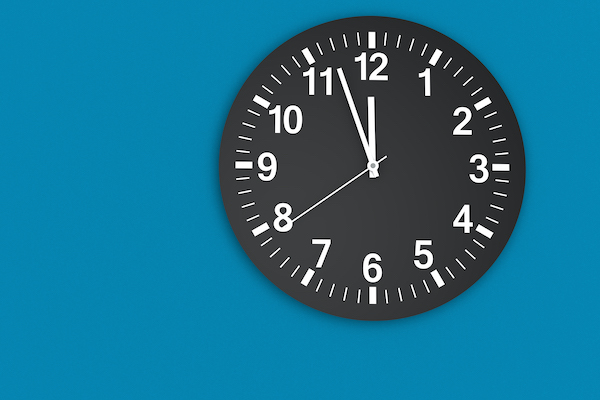
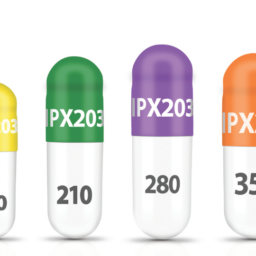
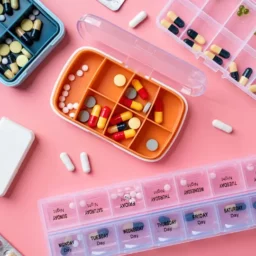




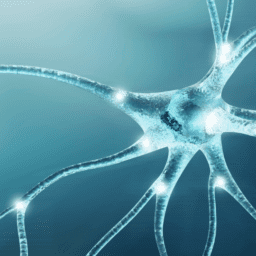
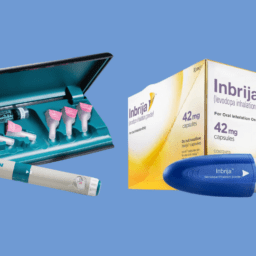
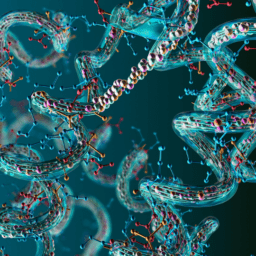






Thank you for this article! It is very well written and easy to follow. I often find much of value on this website and in the newsletters. Would you consider adding a “Download the PDF” or “Print PDF Copy” button to your page? The printed versions do not appear the same as the visual on the webpage, with a very large initial picture overwritten by small, squished text. I would love to share this as a resource, with proper acknowledgements of course, with folks who would benefit, and wish there was an easy way to create an easily readable print copy. Warmest regards and gratitude!
Great suggestion, Michelle. I will start to do this on articles similar to this. Once I get this one done, I will update the post and send you the link.